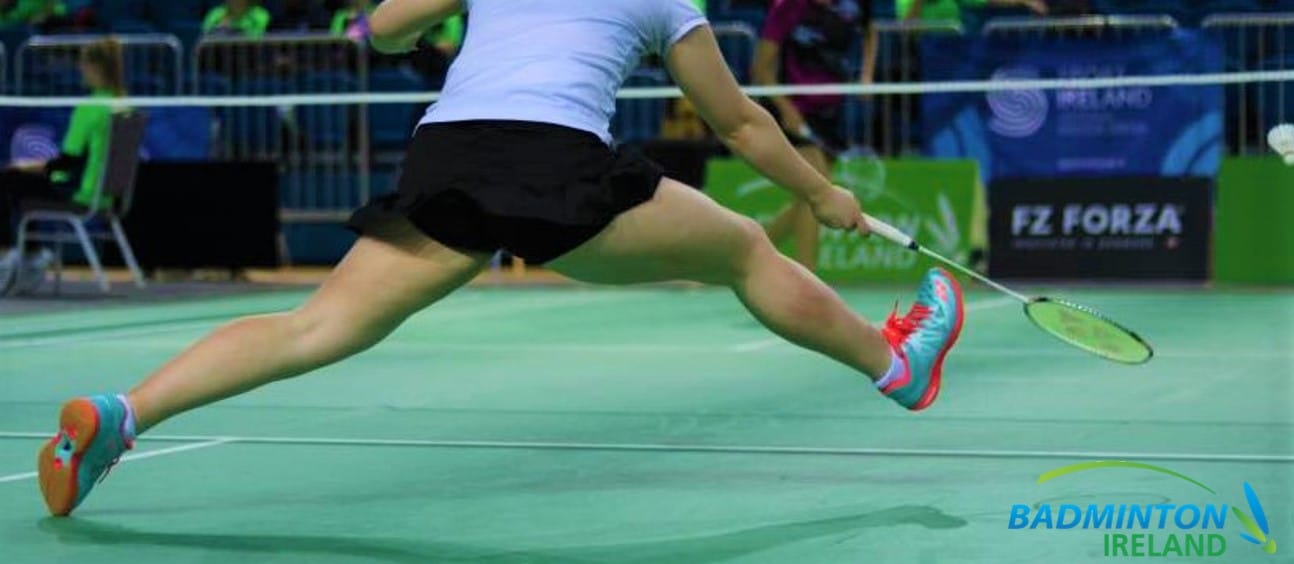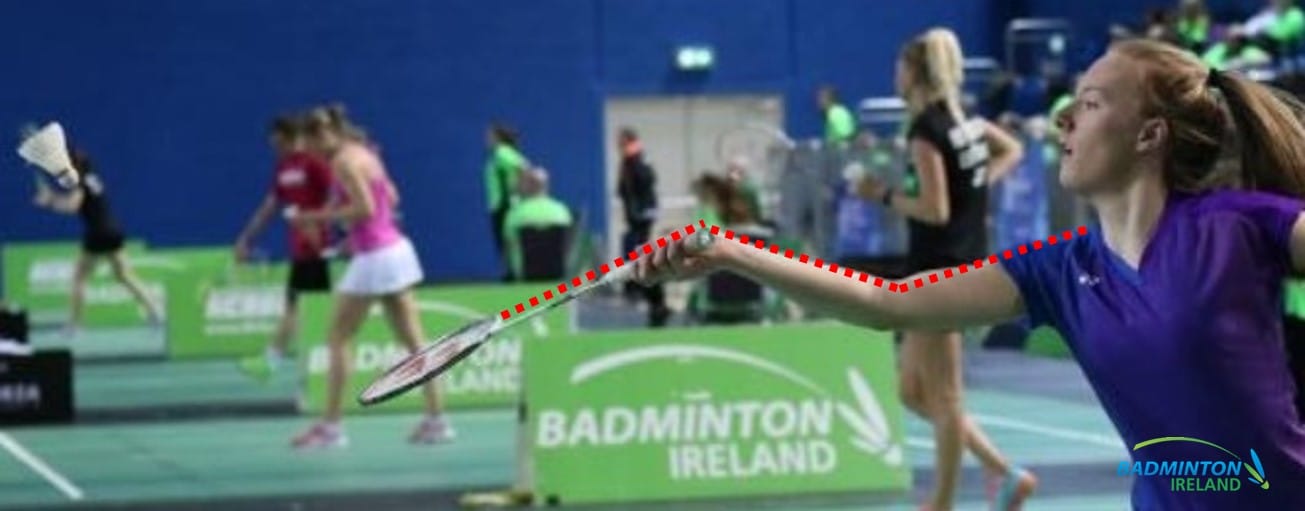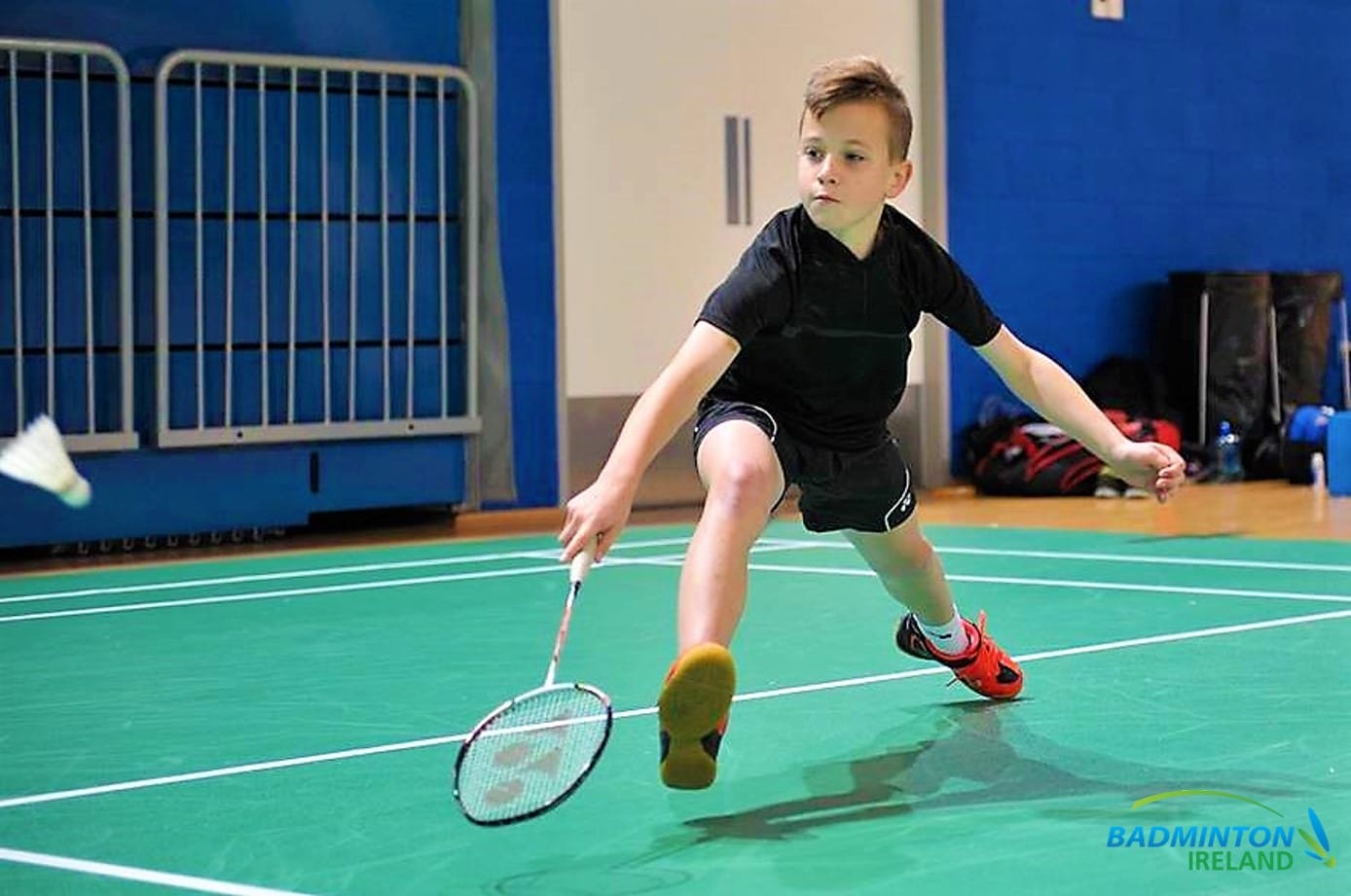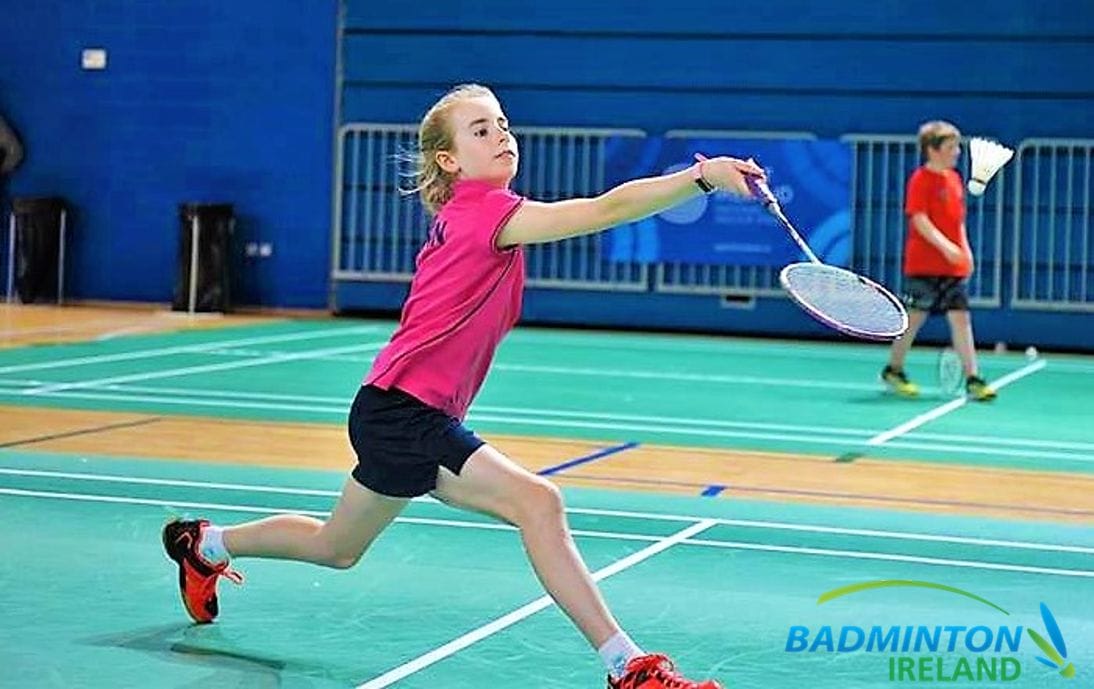6 Ways to coach net play preparation
There are many strokes to play at the net, but what are the ‘core’ net skills?
How can you coach net play skills so that will allow a range of strokes and tactics to be easily developed?
Here are some ideas and suggestions to make your coaching effective and progressive at the net
Come & explore how to use imagery, practice design, tactical thoughts, & the stages of early learning
Please let me know what you think, your ideas and comments are my inspiration
– – – – – – – – – – – – – – – – – –
1. It’s a playing basic; 3 of them
2. Use imagery
3. Early preparation “as if to play a ….”
4. Early learning, then it’s just encouragement
5. “Tough practices”
6. Early shuttle always?
“Reach out for success”
– – – – – – – – – – – – – – – –
1. It’s a playing basic
.. Striking at a comfortable extreme range
.. Early preparation
.. Earliest shuttle always (when tactically desirable)
All the above statements could refer to badminton net play but they also refer to many other strokes around the court.
Take a moment to consider these as ways to think about hitting and moving, especially when moving into the forecourt. They are some of those components that make up strokes and movements. Try saying them out loud and think about the images you have just created in your mind.
 The 3 lines above are taken from a series of posts titled The Playing Basics (Part 1, Part 2, Part 3 and Part 4) If you haven’t already, go and take a look.
The 3 lines above are taken from a series of posts titled The Playing Basics (Part 1, Part 2, Part 3 and Part 4) If you haven’t already, go and take a look.
Hopefully, when you read each line you could imagine a stroke at the net. Can you close your eyes and see that net shot or net flick as you or your player moves quickly into the front of the court.
Try it now and visualise yourself (or your players) moving forwards, reaching out with early preparation. Now your challenge is to include these thoughts in your next front court practice.
Do you have the desire to try and recreate those images in your head into on court actions that work?
Whenever I coach strokes in the front court I always think about these 3 Playing Basics and try to ensure that the practices allow for them. I may not always use the exact words, but the theme is certainly there. Your challenge now is to design practices that allow for these things to happen.
If you are not thinking about allowing for these 3 aspects in your practice, you may be missing out
– – – – – – – – – – – – – – – –
2. Use imagery
Using imagery in your net play and coaching will give you an alternative way to practice and coach the same skill but in a different way. Understanding the power of imagery has always been a goal of mine.
I continue to find faster ways of developing skills using imagery than giving extensive instructions. It still surprises me using imagery works so well.
The long-term benefit is that players can imagine these images during practice or away from the court. Some players even choose to verbalise the cues and often repeat them out loud during the lesson when they need to correct their own efforts.
Have you used cues or images?
I would be very interested to know how you use cues or images in your coaching or play.
Foot Out
 “Foot out” just before contact, used together with “Hit … Land! ”
“Foot out” just before contact, used together with “Hit … Land! ”
Try linking racket preparation with movement. Especially the final part of the movement, the lunge and landing. It is vital to have a ‘timed’ contact with the shuttle. The foot generally lands just before or after contact with the shuttle.
Encourage players to link a ‘racket out‘ with ‘foot out’ as it will provide the player with alternative coaching stimuli and thought. It also saves the need for a technical (sometimes long) explanation. Please try this, the results still surprise me.
The link between racket and front foot is interchangeable. Both will help each other and either can be developed first. The physical movement of presenting the racket out in front will encourage a long lunge and dynamic approach. Likewise, having a desire to complete the movement with a ‘long step’ or ‘jump lunge’ will motivate the player to approach with a racket out preparation. ‘Get your foot OUT when you need to’.
‘racket out‘ with ‘foot out’ then ‘Hit – Land!’
“racket strings tied to your shoelaces”
 Stand up now and imagine having an extra long shoelace that is tied to your racket. It’s so long that you can stand tall. Then move your racket” as if to prepare for a net shot”.
Stand up now and imagine having an extra long shoelace that is tied to your racket. It’s so long that you can stand tall. Then move your racket” as if to prepare for a net shot”.
What happens to your foot?
Hopefully, it’s lifted off the ground and is stepping out in front of you.
Is this similar to the net shot action you would like from your players?
If you coach 6-9 yrs old then have some fun games trying this out, you don’t need nets or shuttles just imagination in warm-ups. With slightly older players allow them to use this image as a way of using a bigger step/lunge that is caused by the action of ‘racket out’.
I would use this suggestion (cue) only a few times until the player has a general idea. Please don’t use it 100% of the time in every lesson.
Let me know what happens when you try it on the court and combine it with the ‘foot out’ cue above.
“Arms Wide – Legs Wide”

This phrase is great when verbalised out loud (as a mantra) both by the coach and by players.
Combining the physical and verbal affirmation often reinforces the learning and can create a strong teaching point.
Arms wide refer to both the racket arm and the “non-racket arm which will be positioned behind the player, often higher than the point of contact.
It is one of the Playing Basics, follow this link for more information.
It sounds easy but can be tough and the rear arm will not always be as high as you see in these great photographs. It’s important to have the arms wide but it’s not essential to always be like this. Please allow some variation in technique with your players and DON’T seek perfection.
It is a great early basic to establish fun ‘bouncing’ practices with shuttles and balloons.
‘Legs wide’ is more desirable as a playing basic when lunging than arms wide. Try to encourage this from a young age and use the feeding in number 5 below to help develop the wide legs. Their future net play will be grateful for this early practice.
Armpit Height
 ‘Armpit height ‘ can be used as a reference for the point of contact for net drops.
‘Armpit height ‘ can be used as a reference for the point of contact for net drops.
I favour this instruction over the instruction to play all shots at the net tape height. I’d even use it before mentioning the desire to have the hand higher than the racket face. Both these instructions are limited as they certainly do not apply to all situations in the forecourt for net drops.
Hopefully, you will find that you don’t need to use these two alternatives. My recommendation is that you never use either of them.
Using the ‘Armpit height’ can reduce the opportunities for overreaching, too high. Therefore increasing the chances of success.
Please try this and let me know what you find.
“W”
 I would only occasionally use this cue as it can encourage players to ‘think’ too much. Sometimes this can resulting a negative effect causing overthinking or paralysis by analysis. I’d ask you to consider carefully when you use this.
I would only occasionally use this cue as it can encourage players to ‘think’ too much. Sometimes this can resulting a negative effect causing overthinking or paralysis by analysis. I’d ask you to consider carefully when you use this.
Try it when you need to discourage or change a completely straight arm action (rigid). Ask players to imagine a “W” shape with their arm and elbow.
An ‘arm out in front’ approach will be required in some situations when there is limited time to get the shuttle. However, developing players may be unable to find success if their arm is too straight and thrust out in front.
To achieve the ‘W’ shape, position the elbow slightly lower than the shoulder and the heel of the hand. The racket head will be pointing slightly downwards below the hand. It is not incorrect to have the strings at the same level as the hand.
Photographs & Videos
Photographs and videos provide an obvious reference. The aspect of copying good techniques must be encouraged in all players of all ages.
Have you tried asking players to look at photographs or videos, then to close their eyes? Ask them to them imagine being that person and playing the shot. This mental rehearsal prior to attempting it for themselves can be very beneficial. Encourage your players and praise them if they talk about videos they have copied.
– – – – – – – – – – – – – – – –
3. Early preparation “as if to play a …”
 Encourage players to approach the forecourt as if to play a ….xxx.… (they select the stroke). This early mental preparation will aid and encourage the physical presentation of the racket and racket arm.
Encourage players to approach the forecourt as if to play a ….xxx.… (they select the stroke). This early mental preparation will aid and encourage the physical presentation of the racket and racket arm.
Players can also be encouraged to consider
“what shot do i want my opponent to believe that I am about to play?”
In time, this early preparation will aid deception. If players are uncertain over what to stroke to prepare for then I recommend that they prepare ‘as if to play a net shot’.
Coach the ‘as if to play’ through a discussion that includes tactical ideas. The idea of preparing so that your opponent is able to see your ‘next’ stroke may sound very simple and obvious. However, it is a powerful underpinning concept. It not only prepares your racket and body (technically), but importantly it causes you to think (tactically) prior to moving/preparing for that stroke. There will be a series of thoughts (eventually without realising it) surrounding the tactical ideas.
Have you thought that it also encourages your opponents to prepare?
Sometimes the opponents is ‘automatic almost subconscious’. Their legs may start to pre-load as they prepare to move, their body starts to shape ‘as if’ to respond to what they think will be their best response. You can use this to your advantage, but only if you prepare as if to play
Question
If you agree with this then have you been including these thoughts of how to prepare ‘as if’ in your net shot practices? Or have you just been repeating net shot after net shot from a multi hand feed?
How often do you do include the elements to make the practice effective: both players using rackets, both moving and one acting as an opponent?
– – – – – – – – – – – – – – – –
4. Early learning, then it’s just encouragement
Try to incorporate the aspects of ‘racket out‘, ‘arms wide-legs wide‘, ‘armpit height‘ into as many practices as possible when working with young novice/developing players.
Coaches will find that this will reduce the amount of technical correction in later practices. It is vital that encouragement and praise for successful and near successful techniques are given. However, please don’t expect perfection.
Use of ‘bouncing’ practices (f/h & b/h) with arms & legs wide is an opportunity to positively reinforce a racket out approach. This fun game is also useful for encouraging players to strike the shuttle around armpit height. Work with the players and ask them to experiment to find out which height gives the most success and comfortable feeling.
I have also found that catching practices using balls and beanbags helps. It’s a fun coordination game with lots of chance to vary the challenge. Can you create a challenge that ensures they are required to step onto the racket leg to catch.
The best practice situations to encourage Early Preparation and Racket out are when you include decision making into your sessions.
Can you design real game-like decisions that reward those players who can use all these points and create ‘opponent uncertainty’
– – – – – – – – – – – – – – – –
5. “Tough practices”
‘Tougher’ feeds can be defined as those requiring the player to move quickly sometimes over long distances, with less travel time, and with increased decision making.
 Feed to encourage ……
Feed to encourage ……
- A racket out (comfortable but towards an extreme range)
- A fast forward movement (i.e. increased distance with reduced time)
- A foot out in approach
- A jump lunge
- Early preparation “as if to play a ….…”
- A deceptive/choice practice
Coaches should not be afraid of providing challenging practice situations when developing net play forecourt skills. Incorporate net shots and low lunges, tough retrieval skills, and early jump lunges.
Be aware that feeding which gives too much time may allow for inefficient techniques
You may think that giving more time it will help the player. I’ve found that in many situations delivering too easy a feed does just the opposite.
It allows an inappropriate (seemly successful) technique to develop, it can give a false sense of confidence.
- Feed as if it was a game
- Try 1 shuttle practices with a ‘player start’
- Racket feed from a variety of heights
- Use different speeds and trajectories
- Backhand feed from your backhand court
- Change position and lunge forward when feeding from the net area
The term ‘tough’ feeding is subjective and should not be confused with unrealistic feeding
Try not to create situations beyond those experienced by the player in a game. Feeding must replicate the situations players experience in a game. For example in a game not all shuttles will be played from close to the top of the net, so replicate those situations you see in a game.
Develop players that enjoy the tough feeding and look forward to the challenges the practice gives to them during all net play practices.
– – – – – – – – – – – – – – – –
6. Earliest shuttle always (when tactically desirable)
 The intention of trying to strike the shuttle as early possible should be instilled in players. However, the intent should not become all-consuming and cause the player to lose balance by overreaching or to overextend the racket arm in preparation.
The intention of trying to strike the shuttle as early possible should be instilled in players. However, the intent should not become all-consuming and cause the player to lose balance by overreaching or to overextend the racket arm in preparation.
There are many advantages to instilling an intent/desire to move quickly towards shuttle and prepare ‘as if’ to strike it early.
- Tactically it will reduce the time the opponent has to prepare and possibly make it difficult to time their starting movement.
- It will aid deception.
- The early preparation and appearance to take the “early shuttle” can be followed by a marginal slowing down or altering the racket preparation in the case of a net drop to net flick type, or the flick to net drop
- Early preparation and subsequent changes can cause opponents to prematurely start their movement by miss timing the pre-loading of their legs.
Players should be encouraged to think “if I step out to the shuttle” it will give me an advantage
Have I missed any of the tips that you know for improving a players net play practice?
One final thought
Have you tried to see if striking the shuttle before or after the front foot lands makes any difference?




